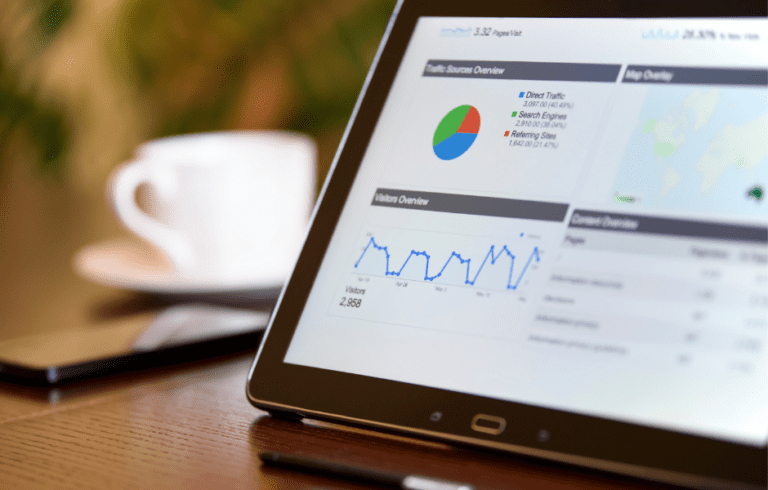A good website design is user-friendly and visually appealing. It provides clear navigation and fast loading times.
A well-designed website enhances user experience and increases engagement. It should have a clean, intuitive layout that guides visitors effortlessly. High-quality visuals and consistent branding help create a professional look. Mobile responsiveness ensures accessibility on all devices, while fast loading speeds keep users from leaving.
Clear calls-to-action (CTAs) drive desired behaviors, such as making a purchase or signing up for a newsletter. SEO-friendly elements, like optimized images and meta tags, improve search engine rankings. Regular updates and maintenance keep the site functional and secure. Effective website design balances aesthetics and functionality to meet both user needs and business goals.
Visual Appeal
A good website design needs to grab attention. One key factor is Visual Appeal. People often judge a site by its looks. A visually appealing site can make users stay longer and explore more. Let’s dive into two major aspects of visual appeal: Colour Schemes and Typography.
Colour Schemes
Color schemes play a crucial role in web design. The right colours can evoke emotions and set the mood. Here are some tips for choosing the right colour schemes:
- Consistency: Use a consistent colour palette across your site. It creates a harmonious look.
- Contrast: Ensure there is enough contrast between text and background. This makes content readable.
- Brand Colours: Incorporate your brand colours. It helps in reinforcing brand identity.
- Emotion: Colours evoke emotions. For example, blue can be calming, while red can be exciting.
Here is a table showing the emotions associated with different colours:
| Colour | Emotion |
| Blue | Calm |
| Red | Excitement |
| Green | Nature |
| Yellow | Happiness |
Typography
Typography is another essential element of web design. It affects how users perceive your content. Here are some key points to consider:
- Font Choice: Choose fonts that match your brand’s personality. Serif fonts are traditional, while sans-serif fonts are modern.
- Readability: Ensure that your text is easy to read. Use a font size of at least 16px.
- Line Spacing: Proper line spacing improves readability. Use 1.5 to 2 times the font size.
- Hierarchy: Create a visual hierarchy with different font sizes and weights. This guides users through your content.
Here is an example of a good typography hierarchy:
| Element | Font Size | Weight |
| Heading 1 | 32px | Bold |
| Heading 2 | 24px | Bold |
| Paragraph | 16px | Normal |
By paying attention to colour schemes and typography, you can create a visually appealing website that attracts and retains users.
User Experience
A good website design is more than just pretty colours and nice images. One crucial aspect is User Experience (UX). UX ensures that visitors find the website easy to use. A well-designed site will make users happy and keep them coming back. Two key parts of UX are Navigation and Accessibility.
Navigation
Navigation is like a road map for your website. It helps users find what they need quickly. Good navigation makes the site feel intuitive. Here are some tips for excellent navigation:
- Simple Menu: Use a clear and simple menu. Too many options can confuse users.
- Breadcrumbs: Breadcrumbs show users where they are on the site. This is helpful for deep navigation.
- Search Bar: A search bar is a must. It allows users to find specific content quickly.
Here is an example of a simple navigation structure:
| Section | Subsection |
| Home | |
| About Us | Our Team |
| Services | Service 1 |
| Services | Service 2 |
| Contact |
Good navigation makes it easy for users to find what they need. This keeps them on your site longer.
Accessibility
Accessibility ensures that everyone can use your website, including people with disabilities. This is not only ethical but also beneficial. An accessible website can reach a broader audience.
Here are some tips for improving accessibility:
- Alt Text: Use alt text for images. This helps visually impaired users understand the content.
- Keyboard Navigation: Ensure the site can be navigated using a keyboard. This helps users who cannot use a mouse.
- Colour Contrast: Use high colour contrast. This makes text readable for people with visual impairments.
Here is a simple table to show accessibility features:
| Feature | Description |
| Alt Text | Text descriptions for images |
| Keyboard Navigation | Site can be used without a mouse |
| The site can be used without a mouse | High contrast for readability |
By focusing on accessibility, you make your site usable for everyone. This will improve your site’s reputation and reach.
Responsive Design
Creating a good website design involves various elements, and one of the most crucial is Responsive Design. Responsive design ensures that a website looks and functions well on all devices, from desktops to smartphones. This approach allows users to have a seamless experience regardless of the device they use, enhancing overall user satisfaction and engagement.
Mobile Compatibility
With more people using their phones to browse, mobile compatibility is essential. A mobile-compatible website adapts to different screen sizes without losing functionality or aesthetics. Here are some key features of mobile compatibility:
- Fast Loading Times: Users expect pages to load quickly on their mobile devices.
- Easy Navigation: Menus and buttons should be easy to tap and use.
- Readable Text: Text should be legible without needing to zoom in.
- Responsive Images: Images should resize and adjust to fit the screen.
Ensuring mobile compatibility involves several best practices:
| Best Practice | Explanation |
| Use Media Queries | Media queries help apply different styles for different devices. |
| Optimize Images | Smaller, optimized images load faster and adapt to screen sizes. |
| Touch-Friendly Design | Buttons and links should be big enough to tap easily. |
A mobile-compatible website keeps users engaged and reduces bounce rates, improving overall user experience and SEO rankings.
Fluid Grids
Fluid grids are a cornerstone of responsive design. Unlike fixed grids, fluid grids use percentages instead of pixels to define widths. This allows elements to resize proportionally to the screen size. Here are some benefits of fluid grids:
- Consistent Layout: Elements adjust smoothly, maintaining a consistent look.
- Better Flexibility: Layouts adapt to any screen size, from large monitors to small phones.
- Improved User Experience: Users get a seamless experience regardless of their device.
Implementing fluid grids involves:
- Using Percentages: Define widths and margins using percentages, not fixed units.
- Flexible Images: Ensure images resize within their containing elements.
- CSS Flexbox: Utilize Flexbox for more dynamic and adaptable layouts.
Fluid grids help create a responsive design that enhances usability and engagement. Websites with fluid grids look professional and work well on all devices, making them a critical aspect of good website design.
Content Quality
What makes a good website design? One of the most crucial aspects is Content Quality. High-quality content ensures that visitors stay engaged and find what they need. This post will explore two key elements of content quality: Relevance and Clarity.
Relevance
Content must be relevant to the audience. If visitors don’t find the information they need, they will leave. Here’s how to ensure relevance:
- Understand Your Audience: Know who visits your site. Create content that meets their needs.
- Keyword Research: Use tools to find what your audience searches for. Include these keywords naturally in your content.
- Timely Updates: Keep content up-to-date. Outdated information can harm your credibility.
- Focus on User Intent: Make sure each piece of content serves a clear purpose for the user.
Consider this table for understanding content relevance:
| Element | Importance | Action |
| Target Audience | High | Research and tailor content |
| Keyword Use | Medium | Integrate naturally |
| Content Updates | High | Regularly review and update |
By focusing on these elements, you ensure your content is always relevant and engaging.
Clarity
Clarity in content means that visitors understand your message easily. Confusing text can drive users away. Here’s how to maintain clarity:
- Simple Language: Use simple words and short sentences. Avoid jargon unless necessary.
- Headings and Subheadings: Break content into sections. Use headings to guide readers.
- Bullet Points: List important points. Bullets make information easy to scan.
- Visual Aids: Use images and charts. Visuals help explain complex ideas quickly.
Here’s an example of clear content:
Instead of saying, “Utilize our platform to maximize your potential,” say, “Use our platform to grow.” This makes the message clear and direct.
In summary, clear content ensures visitors understand your message without effort. This keeps them engaged and reduces bounce rates.
Loading Speed
What makes a good website design? One crucial factor is loading speed. A website that loads quickly keeps visitors happy and engaged. Slow websites can frustrate users, leading them to leave. Let’s explore why loading speed matters and how to improve it.
Optimization Techniques
Improving loading speed requires various optimization techniques. Here are some key methods:
- Minify CSS, JavaScript, and HTML: Remove unnecessary characters and spaces to reduce file sizes.
- Enable Compression: Use Gzip to compress files before sending them to the browser.
- Leverage Browser Caching: Store static files on users’ devices to avoid reloading them.
- Use Content Delivery Networks (CDNs): Distribute content across multiple servers to decrease load times.
- Optimize Images: Compress and resize images without losing quality.
Here’s a comparison of loading times with and without optimization:
| Technique | Loading Time (seconds) |
| Unoptimized | 8 |
| Optimized | 2 |
Impact On Ux
Loading speed has a significant impact on user experience (UX). Faster websites create a better first impression. Users expect quick access to information. If a website is slow, users get frustrated. They may leave and never return. Here are some benefits of fast loading speeds:
- Reduced Bounce Rates: Users are more likely to stay and explore.
- Higher Conversion Rates: Fast websites encourage users to take action, like making a purchase.
- Improved SEO: Search engines favour websites with faster loading times.
- Enhanced User Satisfaction: Users enjoy a seamless browsing experience.
To illustrate, consider these statistics:
| Loading Time (seconds) | Bounce Rate |
| 1-2 | 9% |
| 3-4 | 24% |
| 5-6 | 38% |
Image Sizes
Image sizes play a critical role in loading speed. Large images can slow down a website. Here’s how to manage image sizes effectively:
- Use the Correct Format: JPEG for photos, PNG for graphics with fewer colours, and SVG for logos and icons.
- Compress Images: Tools like TinyPNG reduce file sizes without losing quality.
- Resize Images: Match image dimensions to their display size on the website.
- Use Responsive Images: Serve different image sizes based on the user’s device.
Here’s a table comparing different image formats and their typical sizes:
| Format | Typical Size (KB) |
| JPEG | 200 |
| PNG | 400 |
| SVG | 50 |
By optimizing image sizes, a website can load faster, improving user experience.
Seo Best Practices
Good website design is not just about aesthetics. It’s also about functionality and visibility. SEO Best Practices ensure that a website not only looks good but also ranks well in search engines. These practices enhance user experience and drive more traffic to your site.
Keyword Integration
Keywords play a crucial role in SEO. They help search engines understand the content of your site. Proper keyword integration can significantly improve your site’s ranking.
Here are some best practices for keyword integration:
- Identify Primary Keywords: Use tools like Google Keyword Planner to find relevant keywords.
- Use Keywords Naturally: Avoid keyword stuffing. Place them where they make sense.
- Include Keywords in Headlines: Ensure your H1, H2, and H3 tags contain primary keywords.
- Optimize Images: Use keywords in image file names and alt text.
For example, if your primary keyword is “best website design“, your content might look like this:
| Section | Example |
| Title | Best Website Design Tips for 2025 |
| H1 Tag | Top 10 Tips for the Best Website Design |
| Image Alt Text | best-website-design-example.jpg |
Meta Tags
Meta tags are snippets of text that describe a page’s content. They don’t appear on the page itself but in the page’s source code. Search engines use meta tags to understand the content of your page.
Important meta tags include:
- Title Tag: This appears in search engine results as the clickable headline. Keep it under 60 characters.
- Meta Description: A brief summary of the page content. Aim for 150-160 characters.
- Meta Keywords: Although less important now, they still help. Include a few relevant keywords.
For example, a well-optimized title and meta description might look like this:
| Tag | Example |
| Title Tag | Best Website Design Tips for 2025 |
| Meta Description | Discover the top 10 tips for the best website design in 2025. Improve your site’s look and SEO. |
Using these SEO best practices ensures your site is both user-friendly and search engine-friendly. This boosts your site’s ranking and visibility.
Call To Action
A well-designed website serves as a powerful tool for engaging visitors and guiding them through their journey. One crucial element in achieving this is the Call to Action (CTA). A CTA prompts users to take specific actions, such as signing up for a newsletter, making a purchase, or downloading a resource. The effectiveness of a CTA significantly impacts user engagement and conversion rates. Let’s delve into what makes a CTA effective, focusing on its Placement and Design Elements.
Placement
The placement of your CTA is crucial for grabbing attention and encouraging action. Strategic placement ensures that visitors see the CTA at the right moment. Here are some key considerations:
- Above the Fold: Placing the CTA above the fold ensures it is visible without scrolling. This captures immediate attention.
- End of Content: Placing the CTA at the end of an article or blog post targets engaged readers who have consumed the content.
- Sidebar: CTAs in the sidebar are constantly visible, providing multiple opportunities for interaction.
- Pop-ups: Well-timed pop-ups can grab attention without being intrusive. Ensure they appear at the right moment.
Consider the following table for an overview of effective CTA placements:
| Placement | Effectiveness | Best Use Case |
| Above the Fold | High | Immediate actions, such as signing up |
| End of Content | Moderate | Long-form content engagement |
| Sidebar | Moderate | Secondary actions, like following on social media |
| Pop-ups | Variable | Timed offers or exit intent |
Design Elements
The design elements of a CTA play a pivotal role in attracting attention and encouraging clicks. Effective design elements include:
- Colour Contrast: Use colours that stand out from the rest of the page. High contrast draws the eye immediately.
- Size and Shape: Make the CTA button large enough to be noticeable, but not so big that it overwhelms the content. Rounded corners often perform better.
- Text: Use clear and concise language. Action-oriented words like “Buy Now,” “Sign Up,” or “Download” work best.
- Whitespace: Ensure there is enough space around the CTA. This makes it stand out and avoids clutter.
- Icons and Images: Adding relevant icons or images can make the CTA more engaging. Ensure they align with the message.
Here’s a quick list of tips to enhance your CTA design:
- Use contrasting colours for the CTA button.
- Keep the text short and action-oriented.
- Provide enough whitespace around the button.
- Consider adding an icon to the button.
- Test different sizes and shapes to see what works best.
Remember, an effective CTA combines strategic placement and compelling design elements. This ensures high visibility and encourages user interaction.
Consistency
A good website design relies heavily on consistency. Consistent design helps users navigate the site easily and understand the brand better. It ensures that all elements of the website work together to create a cohesive user experience. Consistency makes the website look professional and trustworthy.
Brand Identity
Brand identity is crucial for a consistent website design. It includes the visual and verbal elements that define your brand. Here’s how you can achieve it:
- Logo Placement: The logo should be in the same place on every page, usually the top-left corner.
- Colour Scheme: Use a consistent colour palette that reflects your brand’s personality. Stick to 2-3 main colours.
- Typography: Choose fonts that align with your brand voice. Use the same fonts throughout the site.
- Imagery: Use similar styles of images and graphics. This helps to build a visual connection.
Below is a table summarizing elements of brand identity:
| Element | Description |
| Logo | Consistent placement and size |
| Colour Scheme | 2-3 main colors reflecting the brand |
| Typography | Consistent font choices |
| Imagery | Similar styles and themes |
Design Patterns
Design patterns are common solutions to recurring design problems. Using familiar design patterns makes your website intuitive. Users know what to expect and how to interact with it. Here are some key design patterns to consider:
- Navigation Menu: Keep the navigation menu in the same place on each page. This helps users find what they need quickly.
- Buttons: Use the same style for all buttons. This includes color, shape, and size. It helps users recognize clickable elements.
- Forms: Make sure all forms look and behave the same way. This includes error messages, labels, and input fields.
- Footer: A consistent footer with key links and contact info makes it easy to find important information.
Consistency in design patterns leads to a better user experience. Users can navigate your site with ease. This builds trust and keeps them engaged.
Read More: WordPress Maintenance Services UK
How Do I Find Out Who Designed A Website
A good website design can make or break your online presence. It’s crucial to have a user-friendly, visually appealing, and functional design. But sometimes, you see a website and wonder, “Who designed this amazing site?” Finding out who designed a website can be a bit of a puzzle. This guide will help you uncover the creator behind a captivating website.
Check The Website Footer
Many designers leave their signature in the website footer. Scroll down to the bottom of the page. Look for phrases like “Designed by” or “Site by”. This is often a quick way to find the designer.
Examine The Source Code
Right-click on the webpage and select “View Page Source” or press Ctrl + U. Search for comments left by the designer. Use the Ctrl + F function and type “designer” or “author” to find any relevant information.
Use Whois Lookup Tools
WHOIS lookup tools can provide details about the website owner. Websites like DomainTools or Whois.net can help you. Enter the website URL to get information about the domain registration.
Check The Website’s About Page
The About page often gives credits to the website designer. Look for sections like “Credits” or “Acknowledgements”. You might find the designer’s name or company here.
Reach Out To The Website Owner
Contact the website owner directly. Use the contact form or email address provided on the site. Ask them who designed their website. Most owners are happy to share this information.
Analyze The Website’s Css And Javascript Files
Sometimes, designers leave their mark in the CSS or JavaScript files. Right-click on the webpage, select “Inspect”, and navigate to the Sources tab. Look for comments or filenames that might indicate the designer’s name or company.
Use Website Design Directories
Design directories like Awwwards or CSS Design Awards showcase award-winning websites. You might find the designer listed there. Search for the website to see if it has been featured.
Frequently Asked Questions
What Are Key Elements Of Good Website Design?
A good website design includes a clean layout, intuitive navigation, fast loading speed, and mobile responsiveness. High-quality images and engaging content also improve user experience.
How Does Website Design Impact User Experience?
Effective website design makes navigation easy, information accessible, and enhances visual appeal. A positive user experience increases engagement and reduces bounce rates.
Why Is Mobile Responsiveness Important?
Mobile responsiveness ensures your website looks good on all devices. It improves user experience and boosts search engine rankings.
What Role Does Color Scheme Play In Design?
A well-chosen colour scheme enhances aesthetics and brand identity. It influences user emotions and improves readability.
Related Post: How to Design a Website for a Small Business
Conclusion
A good website design combines aesthetics, usability, and functionality. It engages visitors and ensures easy navigation. Prioritize responsive design to cater to all devices. Focus on clear calls-to-action and fast loading times. By incorporating these elements, your website will attract and retain more visitors, ultimately driving success.





